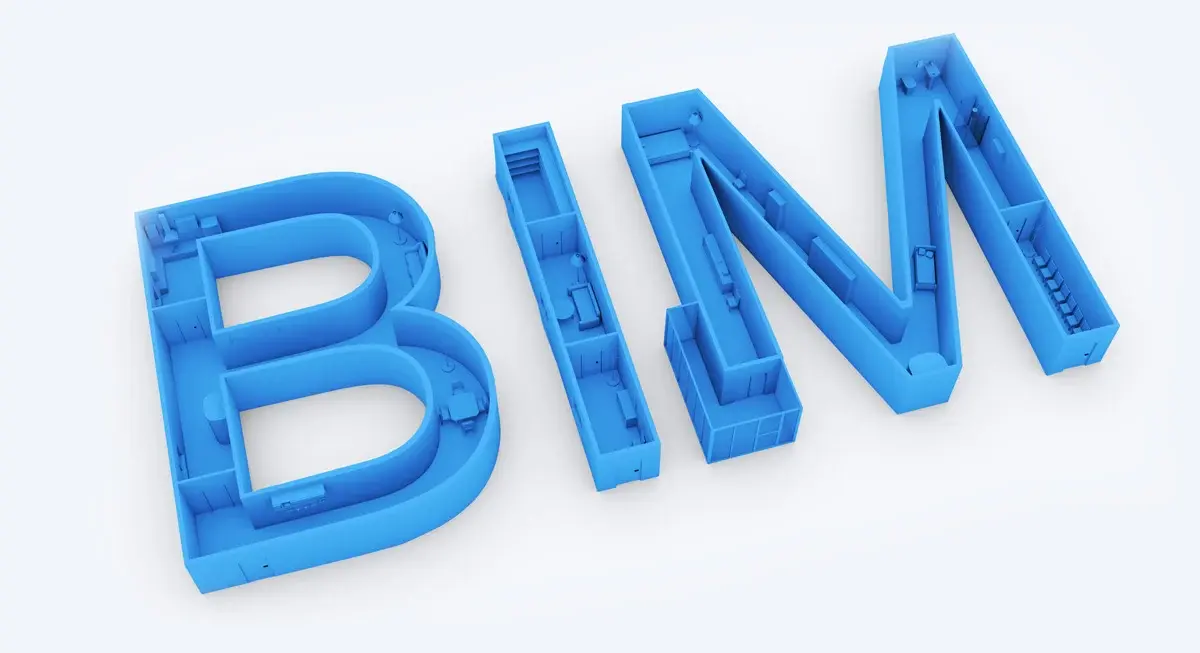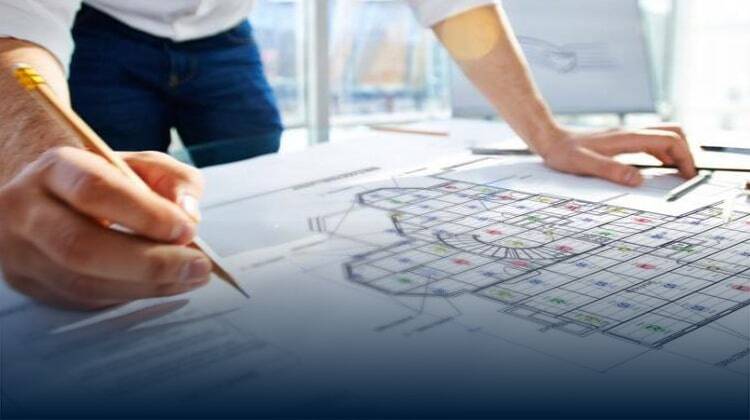.png)
The AEC industry is undergoing a tech-based transformation. The global BIM market is expected to reach $14.8 billion by 2029 with a 13.1% CAGR, reflecting rapid digital adoption. This means the AEC industry is now becoming tech-driven, more than ever, with 68% of the firms already using BIM.
This year itself, with innovation, the question ‘what is architectural drafting?’ is evolving and can be seen in Architectural Drafting trends, which will now be shaped by parametric design, digital twinning to cloud workflows, and 3D printing. In this blog, we explore all aspects of architectural drafting retail jobs, from what architectural drafting is to the current architectural drafting trends.
What Are the Emerging Trends in Architectural Drafting?
Ever questioned ‘What does an architectural drafter do?’
Well, an architectural drafter does a lot; what once used to be just a technical skill has now quickly evolved into something dynamic.
Here is a list of top technological advancements that are shaping the architectural drafting industry:
Technological Advancements or Integrated Design Trends
1. BIM (Building Information Modeling)
BIM has become the central nervous system of drafting workflows. A large number of architecture and engineering firms now use BIM as their primary drafting framework. It enables architectural drafters to create intelligent 3D models rich in data, all while automating documentation and detecting clashes early. BIM also supports 4D (time), 5D (cost), and 6D (sustainability) modelling, making it far more than just a drawing tool. Its integration with tools like Navisworks and BIM 360 ensures that all teams stay updated in real-time.
2. AI and Generative Design

Artificial Intelligence is an enabling architectural drafting trend that is moving beyond repetition and into creative optimisation. Generative design tools such as Autodesk Fusion 360, nTopology, Creo, and Hyparuse explore thousands of layout possibilities based on set parameters, such as lighting, space utilisation, or materials.
3. Virtual Reality (VR) and Augmented Reality (AR)

VR and AR are turning architectural drafting into an immersive experience. With tools like Enscape, Twinmotion, and Unity, drafters can create models that clients walk through in real time. AR overlays enable on-site teams to view blueprints directly on construction sites, making it easier to catch errors before they occur.
4. Cloud-Based and Streamlined Workflows
Gone are the days of emailing file versions back and forth. Cloud-based workflows let multiple team members work on the same file simultaneously from anywhere in the world. Tools like Autodesk BIM 360, Trimble Connect, and AutoCAD Web enable live model updates, instant comments, and centralised file storage. This streamlines collaboration, especially on large or distributed teams. Cloud workflows also support better backup, version control, and security, reducing delays caused by outdated or lost files.
5. 3D Printing
3D printing is revolutionising the way architectural drafters visualise and present their designs. Instead of just creating digital models, drafters can now produce tangible prototypes directly from CAD or BIM software. This helps communicate complex forms, evaluate scale, and even test material performance.
Sustainability and Green Building
6. Sustainable Design

Architectural drafters in 2025 are expected to incorporate passive design strategies, material efficiency, and environmental simulations into every drawing set. Tools like Sefaira, Insight, and Green Building Studio integrate directly with drafting platforms, helping visualise energy usage, daylighting, and thermal performance. As climate-conscious construction surges globally, sustainable drafting isn’t a specialty anymore; it’s a baseline expectation across every project type and sector.
Collaborative and Streamlined Workflows
7. Cloud-Based Collaboration
It isn’t just faster, it’s smarter. Cloud-based platforms let drafters, architects, engineers, and clients co-create in real-time, drastically reducing feedback cycles. Autodesk BIM 360, Trimble Connect, and Graphisoft’s BIMcloud allow secure access to live project files, with integrated chat, version history, and markup tools.
Other Notable Trends
8. Parametric Architecture
Parametric design brings flexibility to creation, all the while enhancing the complexity of the project. Using tools like Grasshopper, Dynamo, and Rhino, drafters can create models governed by rules and algorithms, allowing faster iteration and greater formal experimentation.
9. Curves and Softer Looks
The current aesthetic is curvier, more fluid, and more organic. Inspired by accepting nature in its true form and new fabrication methods, architects are embracing freeform structures, and drafters must adapt too.
10. Digital Twins

Digital twins are reshaping the relationship between design and operation. A digital twin is a real-time, data-connected model of a building that evolves with it. Architectural drafters help create the base model and prepare it for integration with sensors, IoT devices, and analytics platforms. Once a building is in use, its twin reflects temperature, energy use, occupancy patterns, and maintenance needs, helping facility managers make informed decisions.
11. Net-Zero Energy Buildings
The push toward net-zero energy buildings (NZEBs) is redefining drafting deliverables. Drafters must now model how buildings generate as much energy as they consume annually. This means integrating solar panel layouts, ventilation systems, insulation strategies, and building envelope performance into the drawings.
How Is BIM Changing the Drafting Workflow?

Building Information Modeling (BIM) has revolutionised architectural drafting trends, transforming it from 2D drawing into a dynamic, data-integrated process. Instead of the question, ‘How to do architectural drafting?’, drafters should question, ‘How can I evolve?’ With isolated plans, drafters now create intelligent 3D models rich in information about materials, performance, costs, and timelines. Tools like Revit, Archicad, and Navisworks allow for real-time updates, clash detection, and automated documentation, reducing costly errors and rework..
BIM also supports 4D (scheduling), 5D (cost estimation), and 6D (sustainability) modeling, enabling drafters to contribute to broader project insights. With cloud-based BIM platforms, multiple stakeholders collaborate seamlessly on the same file, regardless of location. For drafters, BIM isn’t just software; it’s a collaborative mindset. It enhances efficiency, ensures precision, and connects their work directly to construction and facilities management.
In 2025, BIM isn’t just a skill; it’s the standard, and mastering it unlocks a drafter’s ability to work on larger, smarter, and more sustainable projects.
Conclusion
Architectural drafting has evolved over time, and that’s a good thing. What was once a largely technical role focused on 2D precision has now evolved into a tech-enabled, collaborative discipline driving real-world innovation. From BIM and AI to VR walkthroughs, cloud-based teamwork, and sustainability modeling, the architectural drafter’s skills and services are more powerful and expansive than ever.
These trends not only enhance project quality but also open new career paths for drafters who upskill and adapt.
The future of architectural drafting belongs to professionals who embrace digital transformation, understand the big picture, and contribute beyond drawing sheets. Whether you're preparing data for a digital twin or generating parametric curves, your work shapes the cities of tomorrow. For drafters ready to lead in this era of innovation, 2025 is full of possibilities, and it starts with mastering the tools and trends reshaping the industry today.
At Novatr, we're committed to transforming AEC education to meet that future.
- Visit the Novatr Homepage to understand our mission in transforming AEC education.
- Browse through our Courses Page to find specialised programs tailored for architects and designers.
- Dive into the Learning Hub for in-depth insights, industry trends, and expert resources to stay ahead in the field.
FAQs
1.Are architectural drafters in demand?
Yes, architectural drafters remain essential in construction and design, with around 16,900 annual openings expected due to retirements and the rise of tech-integrated drafting roles.
2. What is the growth rate of architectural drafters?
The U.S. Bureau of Labor Statistics projects a 1% decline in overall drafters’ employment from 2023 to 2033, but specialised roles in BIM and tech-savvy drafting remain strong.
3. Where do architectural drafters make the most money?
Architectural drafters earn the highest salaries in cities like San Jose, CA, where average pay can exceed $68,000/year, well above the national average of -$58,000.
Was this content helpful to you











